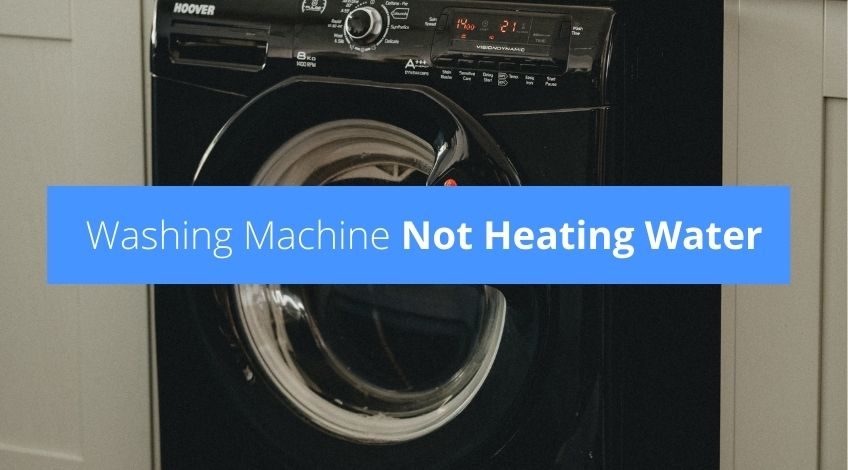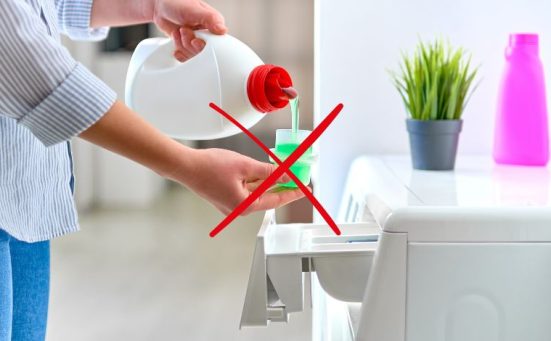
Washing Machine Not Heating Water? (this might be why)
If you suspect your washing machine isn’t heating the water to the correct temperature it could be caused by a number of issues. In this article we’ll take you through the possible causes and solutions to these issues. But first a word of caution.
Unless you are a qualified electrician or washing machine technician you should leave any internal inspections to a professional. Not only could you void any warranty you have on your machine, you could also run the risk of serious personal injury and you could cause electrical problems within your home. Some of which could be life threatening, if in any doubt call an expert.
Most modern machines will display an error code if the water isn’t achieving the correct temperature. This is subject to failure of course but it’s unusual for it to fail.
Are You Sure The Water isn’t Heating Up?
In modern washing machines, which are designed to save energy and water, they rarely reach the temperature that’s quoted on the program. This is because those temperature codes which were set by the Home Laundry Consultation Council (HLCC) are used as a guide and not as an absolute. Laundry technicians have developed programs in conjunction with detergent manufacturers that will give the equivalent wash at lower than stated temperatures.
Wash Programs Are Not Literal
In other words a 40 ˚C cotton wash cycle that’s included on your machine’s programmable cycle won’t necessarily reach 40 ˚C. Just a program that gives the equivalent washing results as a 40 ˚C wash program would. So although 40 ˚C is stated your machine might not reach ½ of that temperature wise.
Door Insulation
Another factor worth considering is that modern washing machines often have glass doors that are insulated with a plastic screen to prevent the operator getting burnt. So even if you feel the glass it might feel completely cold on lower temperature programs.
Time Under Heat
The usual way washing machines function nowadays means there is only hot water during the wash cycle which might only last for 5 to 10 minutes. The program runs with cold water to fill the machine, hot (or warm depending on the program) and then cold water to rinse at the end. If you were to feel the glass door during any period other than the optimum moment during the wash cycle, it will be cool to the touch.
How To Tell If The Water Is Heating Up
If the laundry enters the machine dirty, and leaves the machine clean and smelling fresh, the chances are it’s working correctly. The only way to know for certain if the water is not heating up correctly is by using a hot wash. Remember due to the way machines are programmed it will not necessarily reach the stated temperature, the laundry will just receive the equivalent wash program for that temperature.
Check For Overloading
If you cram too many clothes into the machine, it will not have enough water to wash them all. This is less of a problem for the rinse cycle as this generally uses more water than the wash cycle.
Check The Drainage Filter
Sometimes, washing machines don’t run correctly due to a blockage in the drain filter. This is definitely a task that’s safe enough for anyone to do. Simply locate the drain filter (usually on the front of the machine near the bottom), place a towel on the floor in front of the filter door panel. Twist and remove the filter and check for anything in there that shouldn’t be.
It should have absolutely nothing in there at all, so if there’s any lint, buttons, screws, nails etc remove them. Before replacing the filter gently spin the impeller to confirm that it is operating correctly.
Was The Machine Installed Correctly?

One of the most common causes of washing machines not reaching the correct washing temperature is an incorrect installation. This can cause an unauthorised drainage of water into the drain. If this happens the water in the drum doesn’t get to the desired temperature before being drained and to counteract this the machine pumps more cold water into the drum.
The cycle of hot water being drained and cold water topping up continues until the end of the program. If you suspect this to be the problem, call in a professional to install your machine correctly.
Was The Correct Program Selected?
We all lead such busy lives nowadays, there are just not enough hours in the day. This can sometimes lead us to not fully focus on the task in hand, and we could select a program that doesn’t require the water to heat up by mistake.
Faulty Heating Element
There are a number of reasons the heating element could fail; A short circuit, power surge, manufacturing defect, even old age. If you live in a hard water area, the element could get calcified within 3 to 5 years which will prevent it from working. If this is your problem you’ll need to replace the heating element.
The Thermal Overload Device Activated
This is a relatively small device with an enormous impact. It is designed to activate if it detects a dangerous temperature increase. It’s basically a large fuse which will blow if it encounters any dangerous problems. If it is the thermal overload device you definitely need an engineer. Don’t attempt this one yourself.
Faulty Programmer
As with most other electrical appliances, washing machines rely on circuit boards to operate. These are delicate pieces of kit which can develop faults through minute cracks, loose electrical connections and even slight water damage. Once they develop a problem, you’re at their mercy, sometimes they’ll operate correctly and other times they’ll play up. If you suspect this is the issue, you need a professional technician to replace the control module.
Glitches Within The Software
All modern washing machines rely on computerised technology to operate. This technology can develop faults or glitches. If this is the problem you will probably need a washing machine technician who is familiar with your particular brand of machine.
Faulty Thermostat
Also known as the water temperature control sensor, the thermostat detects the temperature of the water and sends a message to the control module if it needs adjusting. If the thermostat stops working, the water will never reach the correct temperature.
Machine Not Connected To The Hot Water Supply
This is not a thing anymore, as pretty much all modern machines only use a cold water feed to supply water which is heated up internally. However, if you have purchased a reconditioned machine which is of an old design it’s worth checking if it has 2 connecting hoses, one for cold and one for hot water.
Frequently Asked Questions
In theory all modern washing machines should display an error code and abort the wash cycle if the water isn’t heating up. But on older machines and some newer models with defective microchips, the machine will continue washing indefinitely.
All modern washing machines heat their own water. Older models used to have 2 feed hoses, one for hot and the other for cold water but modern machines only have the cold feed hose.
With modern washing machines using insulated glass doors and cooler wash technology, the washing machine door doesn’t ever feel warm. Unless you catch the door at exactly the right moment on a hot wash.
As washing machines rinse using cold water, your clothes should never be warm after being washed in a machine. With that said, cold water is far warmer in the summer than in the winter months.
Also, follow us on Pinterest ...



